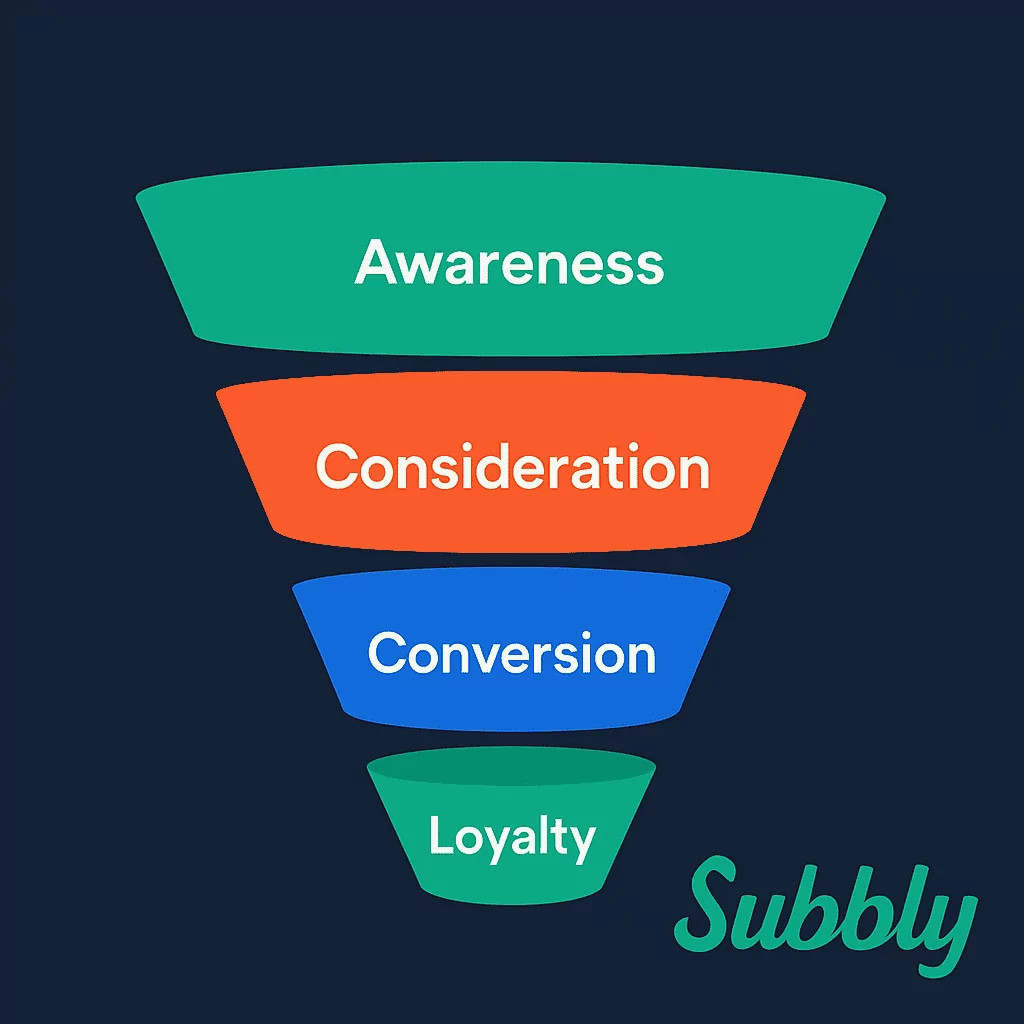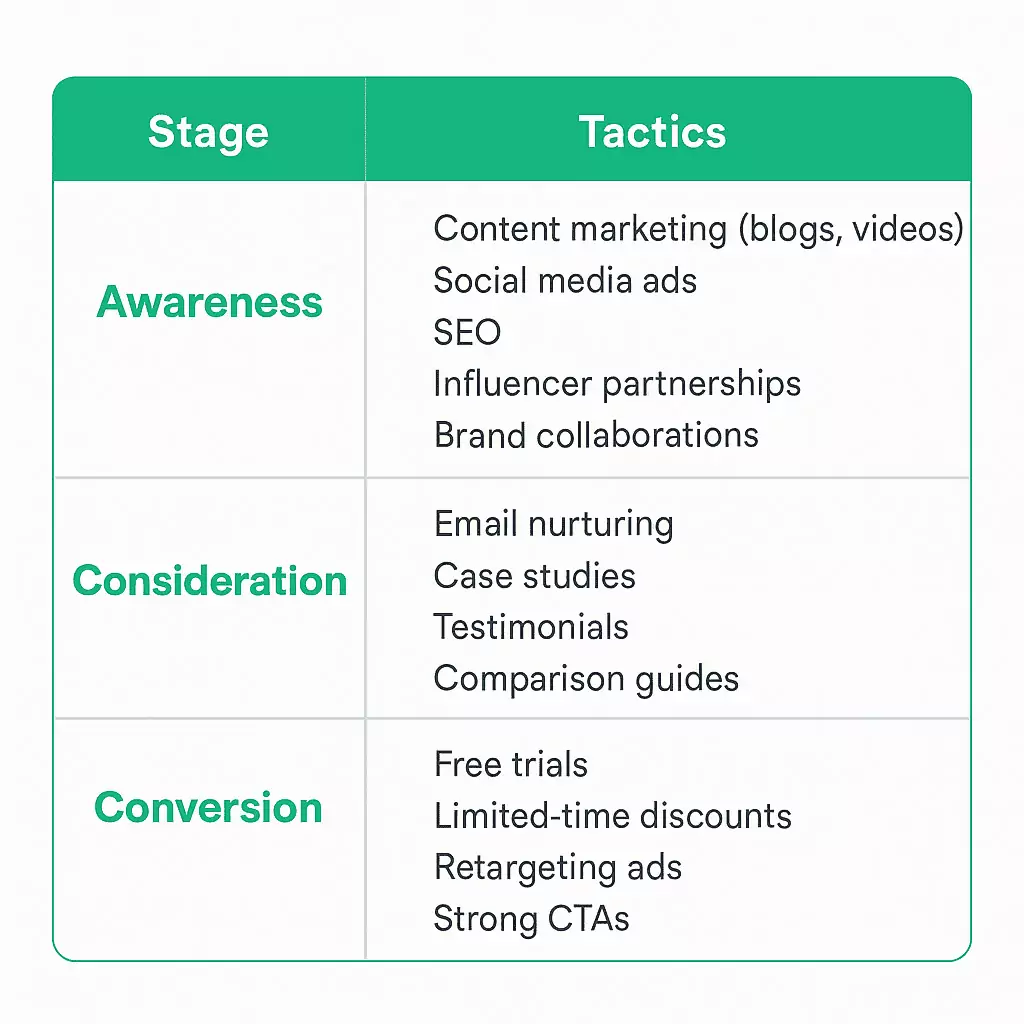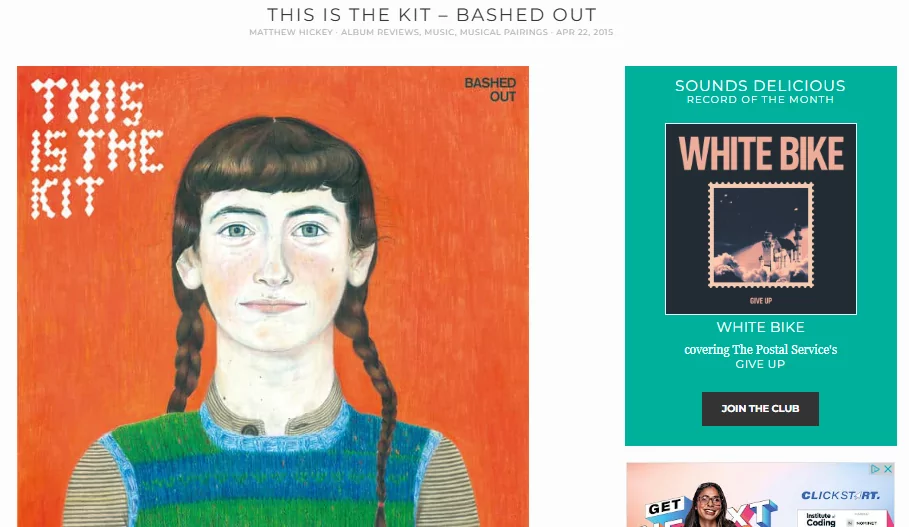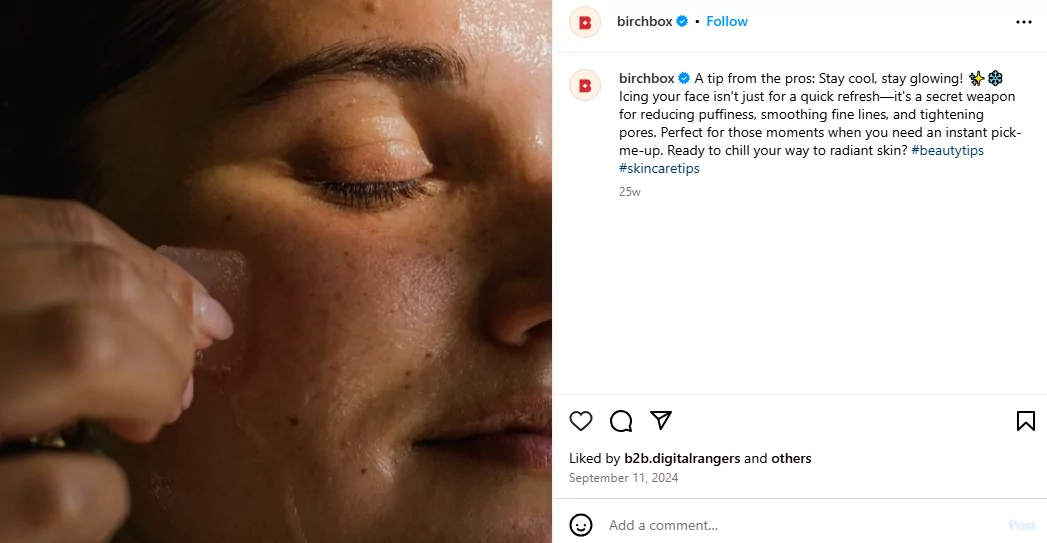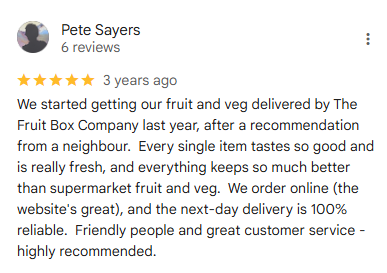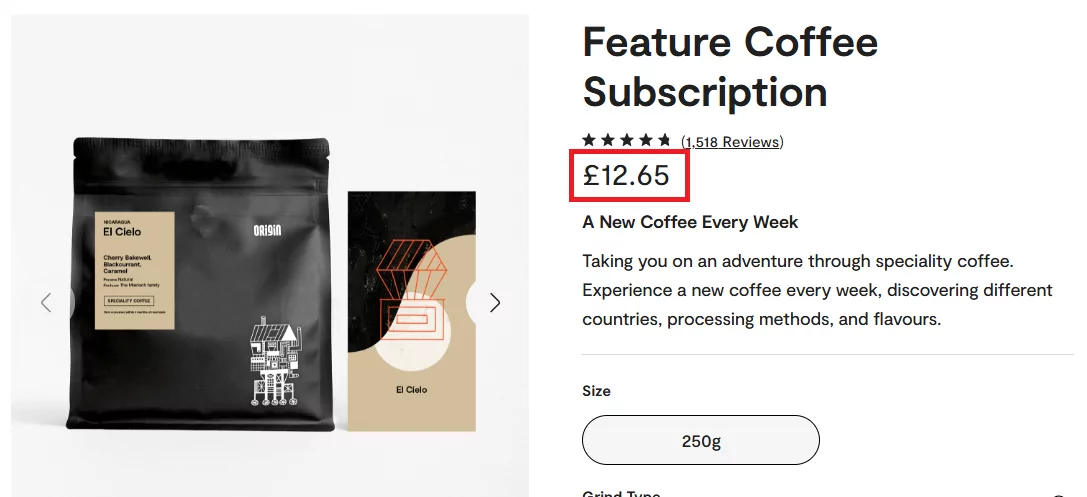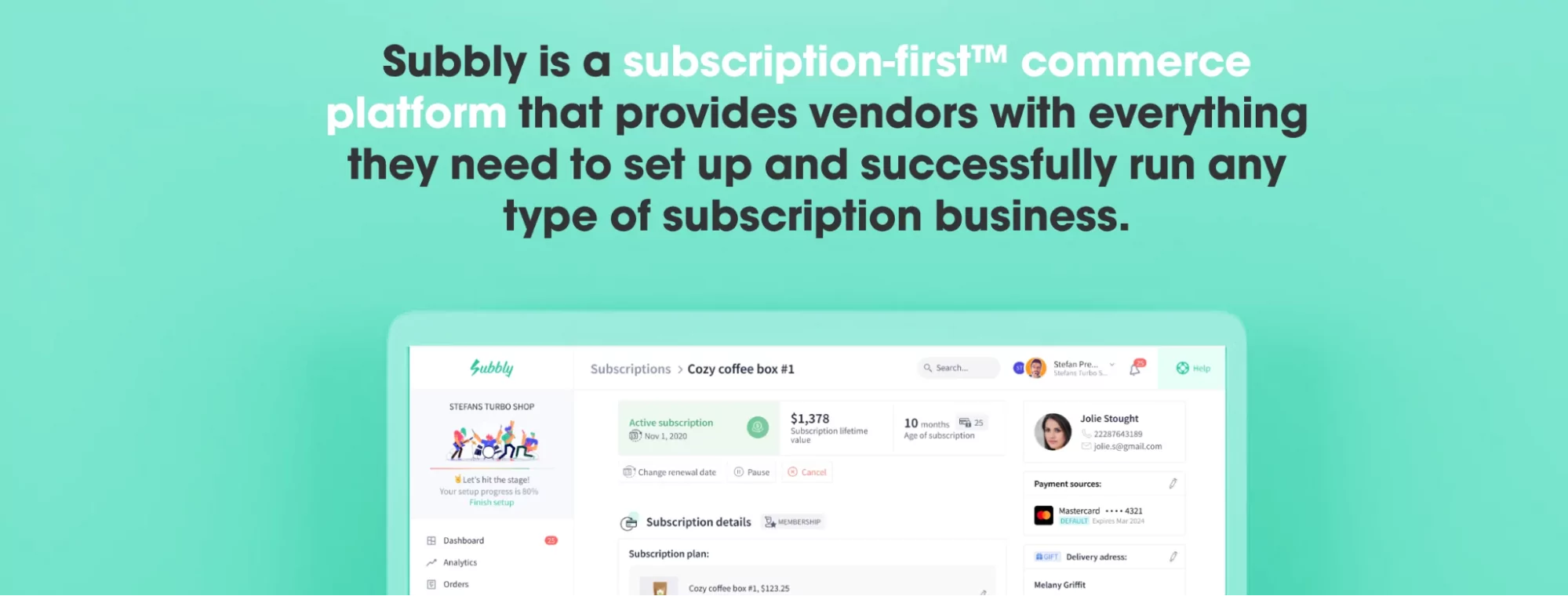1. Know your customers and their journey
Even if you have the best product, your subscription business won’t succeed if you market it to the wrong people.
Knowing your customers will help you understand what they desire, which channels they use and what drives them to buy. This can be used to inform your subscription marketing messaging.
Knowing your customers helps you:
- Correctly segment your target audience
- Identify the stages or touchpoints in your sales process that need fixing
- Understand what makes you stand out from the competition
- Upgrade your boxes and add new features or items to your list
- Inform your future approach to subscription marketing tactics
How to get to know your customers:
💁 Survey customers: Seek customer feedback, both positive and negative. Find out what customers like and dislike about your product and what would drive them to buy it regularly.
💁 Gather data: Most companies operating a subscription model ask their new customers to fill out a short questionnaire. Create your own and use the data from it. Subbly also offers tracking codes as part of its analytics features, which gives you more data to consider when adjusting your subscription marketing strategy.
💁 Create ideal customer profiles: An ideal customer profile (ICP) defines the perfect customer for your subscription business based on demographics, behaviors, and pain points. It helps tailor your subscription marketing strategy by shaping messaging, pricing, and product offerings to match customer needs. To create one, analyze existing customers, identify common traits, and refine targeting to attract similar subscribers.
💡 Expert advice on subscription marketing – Out of all the stages of the customer journey, there’s one that presents a particularly major opportunity, as Subbly expert Alex Fleck explains:
2. Choose your subscription marketing channels
Once you know who you are marketing to, you need to choose which channels you are going to use to connect with them.
The channels you use depend on where the customer is in your subscription marketing funnel. A marketing funnel is a model that represents the customer journey from awareness to purchase.
It helps businesses understand how potential customers move through different stages—such as awareness, consideration, and decision—so they can optimize their subscription marketing efforts to guide customers toward making a purchase.
For example, a common top-of-the-funnel subscription marketing strategy is to create SEO articles that answer potential customers’ questions. This would attract people looking for these answers and introduce them to your brand.
At the end of the article, you might include a button to sign up to your email list to receive regular valuable insights.
These emails could include information about your products. The email might also include a money-off promotion, encouraging them to buy.
Certain channels suit different stages of the funnel. Here’s a quick overview of what is usually effective:
3. Content marketing
Content marketing is the process of creating and distributing valuable, relevant content to attract and retain customers. It’s a powerful way to educate potential subscribers, build trust, and keep existing customers engaged over time.
Unlike direct ads, content marketing nurtures relationships by offering useful information, insights, or entertainment that aligns with what your audience cares about.
Types of content marketing that may suit a subscription business include:
💡 Blog posts and guides: In-depth articles that provide value to potential subscribers, such as how-to guides, industry insights, and trend reports.
💡 Case studies: Showcasing real-life success stories from customers to build credibility.
💡 Product tutorials and educational content: Helping subscribers get the most out of their subscription.
💡 Email newsletters: Sharing exclusive insights, expert tips, or curated recommendations.
💡 Downloadable resources: Whitepapers, ebooks, or checklists that offer practical guidance.
Example: Turntable Kitchen’s ‘Musical Pairings’
Turntable Kitchen, a subscription service that pairs music with food, features a blog called “Musical Pairings.” They recommend music to accompany specific recipes. This unique content reinforces their brand identity and keeps subscribers engaged between deliveries.
For example, it recommends listening to This is The Kit’s Album Bashed Out while cooking Whole Wheat Belgian Waffles with Warm Berries and Whipped Cream in the morning.
4. Social media marketing
Social media marketing helps your subscription business connect with potential customers, build brand awareness, and engage with your target audience effectively.
It’s a cost-effective way to showcase your offering, create a sense of community, and encourage word-of-mouth marketing. Unlike traditional ads, social media allows for two-way interaction, fostering stronger relationships with customers.
Effective social media strategies for subscriptions:
💡 Choose the right platform: It’s important to focus on the social media platforms that are popular with your audience.
💡 User-generated content: Encouraging customers to share their experiences, unboxings, and testimonials.
💡 Educational posts: Sharing quick tips, tutorials, or industry insights.
💡 Behind-the-scenes content: Offering a glimpse into your brand’s story, process, or team.
💡 Contests and giveaways: Driving customer engagement by incentivizing participation.
💡 Interactive features: Using polls, quizzes, and Q&A sessions to involve your audience.
Example: Birchbox’s Instagram engagement
Birchbox, a beauty subscription service, uses Instagram to connect with customers. They share beauty tips, feature customer testimonials, and post unboxing videos that showcase their products.
By responding to comments and encouraging user participation, they build a strong, loyal community.
A well-planned social media strategy can help subscription brands increase awareness, drive sign-ups, and foster long-term customer relationships.
5. Influencer marketing
Influencer marketing involves partnering with content creators who have a similar audience to yours to promote your subscription service.
Since influencers have built trust with their followers, their recommendations can feel more authentic and persuasive than traditional ads.
Influencers can showcase subscription business products in action, explain their benefits, and create excitement around the brand.
Effective influencer marketing strategies for subscriptions include:
💡 Unboxing and review videos: Influencers demonstrate what subscribers receive and share their honest impressions.
💡 Exclusive discount codes: Providing influencers with unique discount codes encourages their audience to subscribe.
💡 Long-term partnerships: Instead of one-off promotions, working with influencers over time builds credibility and ongoing exposure.
💡 Behind-the-scenes content: Influencers give a closer look at the brand and what makes the subscription special.
💡 Live Q&A or tutorials: Influencers show how to use a product, answer audience questions, and increase engagement.
Example: HelloFresh’s influencer collaborations
HelloFresh, a meal kit subscription service, regularly partners with food influencers and lifestyle creators. Influencers share cooking experiences using HelloFresh ingredients, highlighting convenience, taste, and time savings.
Many also offer discount codes, making it easy for followers to try the service at a lower cost.
In the example below, British actor and reality TV star Joe Swash has posted a video of himself on TikTok cooking a HelloFresh meal for his family. He has more than 43,000 followers and the video has gained over 15,000 likes.
By working with the right influencers, subscription brands can reach highly targeted audiences, drive sign-ups, and establish trust with potential customers.
6. Paid advertising
Paid advertising allows subscription businesses to reach potential customers quickly and effectively. Unlike organic subscription marketing, paid ads provide instant visibility, helping brands scale their subscriber base.
Platforms like Google Ads and display networks target users searching for related products, while social media ads leverage audience data to find ideal subscribers.
Effective paid advertising strategies for subscriptions include:
💡Search ads: Appear at the top of search results when users look for relevant keywords (e.g., “best coffee subscription”).
💡Display ads: Visually engaging banners placed on relevant websites to increase brand awareness.
💡Video ads: Platforms like YouTube help demonstrate subscription products in action.
💡Lookalike audiences: Platforms like Facebook and Google identify new users similar to existing loyal subscribers for efficient targeting.
Retargeting is especially valuable for subscription businesses, as it reminds potential customers of what they were interested in and encourages them to complete their sign-up.
Whether it’s a special offer or a reminder of the benefits, retargeting keeps your brand top of mind. With a well-structured paid ad strategy, subscription brands can attract the right audience, maximize conversions, and scale their growth efficiently.
7. Encouraging reviews: building trust and credibility
Customer reviews play a crucial role in subscription marketing. They provide social proof, helping potential subscribers feel confident in their decision.
Positive reviews can increase conversions, improve customer retention, and even boost search rankings. Since subscriptions require an ongoing commitment, seeing real customer experiences can be the final push someone needs to sign up.
Strategies to encourage customer reviews:
💡 Automate review requests: Send follow-up emails after a subscriber receives their first box or experiences the service.
💡 Incentivize feedback: Offer discounts, loyalty programs, or exclusive content in exchange for honest reviews.
💡 Seamless review process: Make it easy for customers to leave reviews on your website, Google, or third-party platforms.
💡 Feature reviews prominently: Showcase testimonials on landing pages, product pages, and checkout screens.
💡 Engage with reviewers: Responding to reviews—both positive and negative—demonstrates that you value customer feedback and care about improving the experience.
Here’s a glowing review for The Fruit Box Company on Google. If someone is considering your company, then reading something like this might be enough to get them to make a purchase.
Subscription brands that actively collect and highlight customer reviews can build stronger trust, reduce hesitations, and create a more compelling case for potential subscribers to join.
8. Provide clear pricing
Nobody likes hidden fees and small print — we all know they don’t bring any good news. Make sure any information about your pricing model includes all the details users need in order to make their choice.
How to ensure clear pricing:
💡 Ensure prices are clear at-a-glance: People hate not seeing the answer to “How much?”. Don’t make them hunt for pricing in a DM or comments, make your subscription pricing plans transparent from the get-go.
💡 Don’t use small print or footnotes: If your pricing model comes with certain terms and conditions, add a link to a webpage or PDF file that covers them. It’s better for both your customers and your design
9. Encourage upgrades
If you have several subscription tiers as part of your pricing strategy, higher tiers should provide more ongoing value to your customers while bringing you extra recurring revenue. Encourage people to try them out and upgrade.
How to encourage upgrades:
💡 Promote it: Use a trial of the most expensive option as a reward for something, like taking a survey about their experience with your company. After all, 34% of people said they’re more likely to complete a survey if they have material gratification. In this way, you’ll get to know your customers better, show them the benefits of upgrading, and build a positive impression of your brand. Plus, it’s a great marketing strategy for customer retention, as you keep the customer and increase your ARPU.
💡 Make it a thank-you for a referral: What about offering a month of premium plan/box in exchange for referring a new customer? That can both show the benefit of a more expensive box and land you a new customer: a double win!
10. Offer an excellent shopping experience

Source: Canva
There’s a huge number of online stores and subscription businesses out there. People will opt for the ones that provide them with an excellent shopping experience.
What’s more, if something feels off, they won’t make repeat purchases from the same company. This means you need to make sure that online shopping from your website or app is impeccable and seamless from the first visit to clicking “Confirm order.”
How to create an excellent shopping experience
💡 Run diagnostics regularly: You’ll be surprised how many pitfalls your customers face without you knowing it.
💡 Write memorable (and shareable) copy: Writing original and creative thank-you-for-your-order messages, especially for new customers. They may share this on social media, creating free advertising for your brand.
💡 Make it fast and easy: Make sure your ordering process uses as few clicks and taps as possible – a good subscription ecommerce platform will make this straightforward.
💡 Deliver on time: Whether you’re packing boxes yourself or using an outsourced partner, make sure to let subscribers know when they can expect their packages.
11. Make it a game
We all love to play, so making shopping on your site feel like a game can incentivise customers to buy or engage more.
App gamification is, of course, the most popular solution, but it isn’t the only one for the savvy subscription marketer.
How to add gamification to your shopping experience:
💡 Include ‘unlocking’ in your subscription marketing toolkit: Think of Mario jumping from level to level and apply this concept to your box. For example, when a customer has bought 10 of your gardening boxes, they get the foundation for a virtual cottage. Show their cottage developing in your website or app as they get their box, so they can see their progress.
💡 Enable customers to score points: Enable customers to collect points when they buy from you or interact with your brand. These points can be applied as discounts or early access to some new features. Or let your customers collect points that they can trade for a discount later on.
12. Offer a free trial or samples
This is one of the oldest subscription advertising tricks in the book, and is a great idea regardless of whether you offer a physical product or an intangible product or service.
For instance, Sephora always puts free samples in its Play! Box, and allows you to choose them when you make a regular purchase.
The only drawback is that people can get used to this quickly, so when you decide to stop giving things for free, be ready for anger, questions, and negative comments.
How to offer free samples:
💡 Offer free trials alongside full-featured products: Don’t forget to mention what comes with each pack, so your customers can choose for themselves.
💡 Put miniatures of a new product into every box: This will surprise customers and also give them time to think whether they need to buy it in the future – while also helping you create a memorable unboxing experience, too.
💡 Think freemium: This is a staple subscription marketing strategy to land as many new customers as possible on the most expensive plan or box you have. Why do you think YouTube Music offers one month of its best premium plan for free? So you stick with it later! Just be aware that this may involve more upfront investment, as you’ll be sacrificing your company’s revenue in the short term for the chance of longer-term gains.
13. Offer advance payment discounts
Most subscription companies charge you less if you pay for a year upfront instead of paying on a per-month basis. They also tell you exactly how much you’ll save when you do so. You consider paying upfront, right? Who wouldn’t, after all?
This is exactly the point of providing advanced payment discounts: you retain your customers and make sure you have the money you can spend for business needs. It also makes things much easier for you from a revenue forecasting point of view, too!
How to offer advanced payment discounts:
💡 Introduce an annual subscription: Add and advertise an annual billing option. It would be even better if it comes with an extra goodie on top!
💡 Show the obvious benefit: For instance, display both the monthly and annual subscription prices and show the amount that the user can potentially save.
14. Set up automatic renewals
Nobody wants to be reminded every week or month that they need to pay for their subscription box. First, it may at some point raise the question of canceling it because it’s too much money.
Second, if the person needs your products or services for work, they won’t appreciate an unnecessary notification on their screen. Automatic renewal is an option, just like automatic charging for services.
How to implement an auto renewal system:
💡 Get permission to charge the payment card: This is step zero for automating payments. Subbly, for example, supports automated renewals and recurring payments, so your active subscribers get their boxes with just one confirmation they give at the start of the process.
💡 Customize billing and shopping cycles and communicate the payment date: People like to know where their money is going, so keeping things regular will make them happier. Set up a particular payment date for your customers to know when they should have some funds on their cards.
15. Improve your customer relations
Satisfied customers are more likely to become repeat customers, so you should nurture customer relationships at every opportunity.
How to improve customer relations:
💡 Ask them how they’re doing: Use a survey or rate-us questionnaire to ask your customers how they feel they’re being treated by your subscription-based business. Maybe some customers feel like you’re spamming their e-mail boxes, while others might want to hear more from you or hear some different information. The most important part? Use this data to change your ongoing subscription marketing campaigns.
💡 Invest in excellent customer support: As much as we’d all like to be free of less-than-positive issues that can cloud our business, there will be questions that require assistance. It’s always better for your customer relationships when that assistance is delivered quickly and professionally. Fast and customer-centric service is the best solution.
A Platform That Supports Your Strategy
An effective subscription marketing strategy involves using the right combination of techniques and channels to acquire and retain customers that love your products.
As a subscription-first e-commerce platform, we at Subbly know that better than most. Using the tips we’ve given here, as well as some of our other strategies, you’ll be able to grow your business.
Our platform includes a range of tools and features geared to helping subscription businesses attract customers and create a loyal customer base, including:
✅ Email marketing
✅ Affiliate and referral programs
✅ Coupons and discounts
✅ Gift subscriptions
✅ Abandoned cart recovery
✅ Pop-ups and upsells
✅ Up-sell and down-sell funnels
✅ Lead capture forms
✅ SEO tools
✅ Blogging
✅ Third-party integrations
✅ Analytics and reporting
✅ A/B testing
If you want a subscription-first platform, sign up for a free Subbly trial and take your subscription marketing game to a new level and unlock more opportunities!





